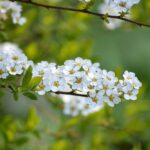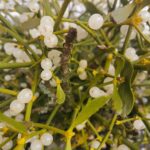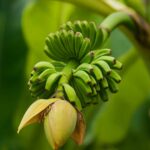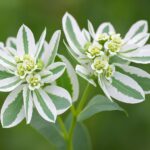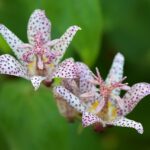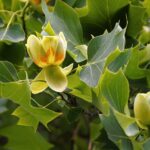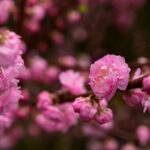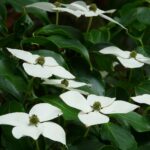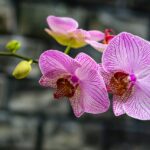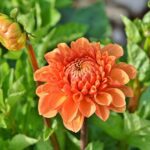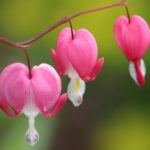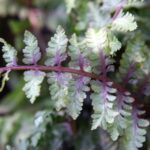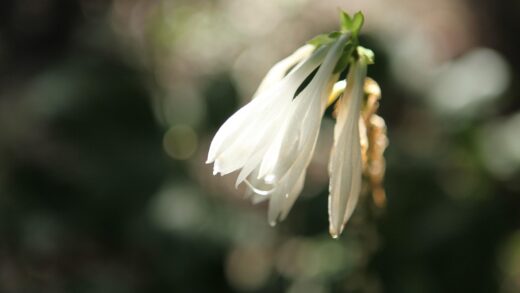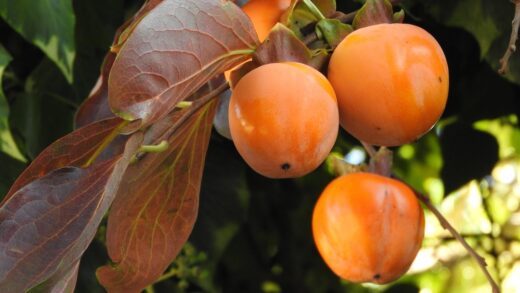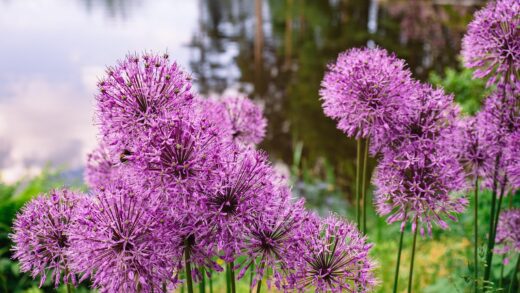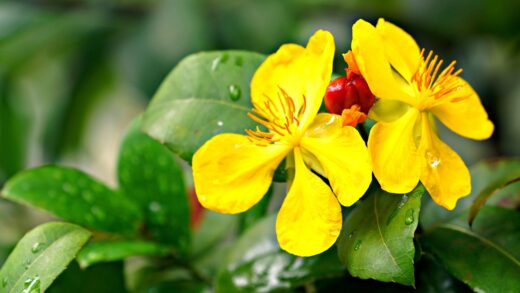The Hosta, known to gardeners as one of the most beloved and versatile perennials for shady garden areas, has earned its reputation for a reason. It is widely believed that this plant specifically prefers shade, and indeed, few other ornamental plants can fill areas shaded by trees and buildings with such lush, spectacular foliage. However, it is crucial to understand that the term “shade-loving” is not synonymous with requiring “no light”; an adequate amount and quality of light are essential for the Hosta’s healthy development, photosynthesis, and the achievement of its variety-specific vibrant colors. Complete darkness or extremely deep shade will lead to the plant’s decline just as much as scorching, direct sunlight.
In horticultural practice, the concept of shade is remarkably complex and can be broken down into several categories, the understanding of which is key to finding the ideal location for Hostas. Deep shade, found for instance under dense evergreen canopies or at the base of north-facing walls, provides the least amount of light, a condition where most Hosta varieties merely survive, with their leaves becoming pale and the plant becoming leggy. In contrast, partial shade or filtered light, experienced under the sparser canopy of deciduous trees, creates ideal conditions, as shifting beams of light continuously reach the plant’s foliage throughout the day without being intense enough to scorch it. Partial shade implies that the plant receives direct sunlight for a part of the day, typically during the less intense morning or late afternoon hours, which is particularly beneficial for many varieties.
The biological basis for the shade tolerance of Hostas lies in the structure and pigmentation of their leaves. The leaves generally have a larger surface area, which maximizes the absorption of available, diffused light. Additionally, their chlorophyll composition is adapted to lower light intensity conditions; they have a higher ratio of chlorophyll b, which is more efficient at utilizing the blue and green wavelengths of light characteristic of shady spots. This specialization makes them successful in the shade but also extremely vulnerable to direct, strong sunlight. Excessive light can cause photodegradation, or the breakdown of chlorophyll molecules, leading to scorching, yellowing, and death of the leaves.
One of the most common misconceptions about Hostas is that all varieties have the same light requirements. In reality, the Hosta genus exhibits extraordinary diversity, and the light needs of individual cultivars can differ dramatically. The color, thickness, and variegation of the leaves are the most important indicators for determining the optimal light conditions for a specific plant. A rule of thumb is that the lighter or more variegated a Hosta’s leaf is, the more light it needs to maintain its color, but it is also more sensitive to scorching. Understanding these relationships is essential for creating a successful and spectacular Hosta garden.
The relationship between leaf color and light requirements
Solid green-leaved Hosta varieties are generally the most adaptable to various light conditions. Classic varieties such as ‘Devon Green’ or a young ‘Sum and Substance’ display a uniform chlorophyll distribution in their deep green leaves, enabling them to photosynthesize efficiently across a spectrum from deeper shade to a few hours of morning sun. Although these varieties are the most shade-tolerant, complete, continuous darkness will also lead to stunted growth, reduced leaf size, and a general decline in the plant’s health. The ideal environment for them is filtered light or a location that receives morning sun but is protected from the afternoon heat.
More articles on this topic
Blue-leaved Hostas, such as ‘Halcyon’ or ‘Blue Angel’, require special attention regarding their light conditions. The characteristic bluish-silvery hue of the leaves is provided by a waxy coating, known as the cuticle, which protects the leaf and reflects UV rays. This waxy layer is extremely sensitive to heat and strong, direct sunlight; the hot midday or afternoon sun can cause the wax to melt, making the leaf lose its blue color and turn green. Furthermore, once the waxy layer is lost, the leaf tissue becomes vulnerable to scorching, so blue varieties must be protected from direct sun and planted in deeper, cooler shade.
Gold, yellow, or chartreuse-leaved varieties, like ‘Sun Power’ or ‘August Moon’, are at the other end of the spectrum in terms of light requirements. For these cultivars to develop and maintain their bright, vibrant colors, they need more light than their green or blue counterparts. In deep shade, their leaves will fade to a nondescript, pale greenish hue. The ideal placement for them is a garden area where they receive several hours of non-scorching morning sun. This light brings out the golden tones without damaging the leaf tissue, while afternoon shade provides protection during the hottest hours.
Variegated Hosta varieties present the greatest challenge in terms of placement, as a balance must be struck between the needs of the photosynthesizing and non-photosynthesizing parts of the leaf. In varieties like ‘Patriot’ or ‘Minuteman’, the white or cream-colored leaf margins contain no chlorophyll and thus do not participate in photosynthesis. The plant must compensate for this deficiency with the green parts of the leaf, which requires more light. However, it is precisely these light-colored sections that are most susceptible to sunburn. The classic ‘Frances Williams’ variety is a perfect example of this dilemma: it needs bright, filtered light to look its best, but its leaf margins can easily turn brown and dry out with even brief exposure to direct sun.
Practicalities of optimal placement in the garden
The first step in selecting the most suitable location for Hostas is a thorough assessment of the garden’s light conditions. To do this, it is advisable to observe the chosen area throughout a full day at different times—morning, noon, and afternoon—to get an accurate picture of how long and how intensely it is exposed to sunlight. East-facing garden areas often prove to be ideal, as here the plants can enjoy the beneficial effects of the gentle morning sun while being protected from the scorching afternoon rays by natural shade. In contrast, south- or west-facing areas are generally too hot and sunny, unless tall trees or buildings provide adequate shading.
More articles on this topic
The quality of shade provided by a tree’s canopy is crucial. There is a significant difference between planting under a dense, deep-shading conifer and under a high-trunked, sparser-canopied oak tree. The “dappled” or “filtered” shade created by the latter provides a paradise-like environment for most Hostas, as the shifting light beams filtering through the leaves create a constantly changing mosaic, ensuring no single spot receives direct radiation for too long. However, it is important to consider that the root systems of large trees are major competitors for water and nutrients, so extra care must be taken with the irrigation and feeding of Hostas planted beneath them.
The plant itself sends clear signals if its light conditions are not suitable. The most common symptoms of too much sun are browning and drying of the leaf edges (necrosis), yellow or whitish patches on the leaves, faded colors, and a generally wilted, stressed appearance. Conversely, the signs of too little light include elongated, etiolated leaf stems (petioles), smaller-than-normal leaves, dullness of colors—for example, yellow-leaved varieties turning a boring green—and a failure to flower or poor development of flower scapes. Recognizing these signs in a timely manner allows for necessary corrections, such as transplanting the plant.
There are also practical solutions for slightly modifying existing light conditions. You can plant taller, sun-loving perennials or shrubs next to more sensitive Hosta varieties to cast natural shade on them during the critical midday hours. Container gardening is also an excellent method, as it allows the plant to be moved until the perfect spot is found in the garden or on the patio. Furthermore, covering the soil with a thick layer of mulch not only conserves moisture but also helps keep the root zone cool, which indirectly increases the plant’s tolerance to sunlight.
Light requirements in the context of different climates and seasons
The light tolerance of Hostas is significantly influenced by geographical location and the climate of a given region. A Hosta variety that thrives with four hours of morning sun in a cooler, northern climate, such as Scandinavia, might suffer severe leaf burn from the same duration of exposure in a hotter country, like Hungary or Southern Italy. The intensity of the sunlight, determined by the angle of the sun’s rays, is at least as critical a factor as the duration of exposure. Therefore, in warmer climate zones, gardeners must be much more cautious and provide full or filtered shade for most varieties during the hottest part of the day.
The changing of the seasons also dynamically alters the light conditions in the garden, to which plants must adapt. In spring, before deciduous trees are fully leafed out, Hostas may receive significantly more direct sunlight than during the summer. This early spring sun is generally beneficial, stimulating rapid emergence and growth, but a sudden heatwave can already cause damage to the fresh, tender leaves. In late summer and autumn, as the sun’s angle decreases, the light intensity also lessens, reducing the risk of scorching, and varieties that require more light can once again display their full splendor.
The relationship between light and water is inseparable from the healthy development of Hostas. A plant exposed to more sunlight has a much higher rate of transpiration and therefore requires significantly more water to stay hydrated and cool its leaf tissues. A well-watered Hosta can tolerate the sun much better than a counterpart languishing in dry soil. Therefore, if you plant a Hosta in a brighter location, it is essential to keep the soil consistently moist to prevent stress-related damage and leaf scorch. Proper watering increases the plant’s vitality and resilience.
In summary, the relationship between Hostas and the concept of “shade” is far more nuanced than one might first think. The key to successful cultivation lies in creating a dynamic balance between the cultivar’s genetic traits, the duration and intensity of light, the time of day, geographical location, and horticultural practices such as watering. Paying attention to the plant’s signals and consciously shaping its environment will allow these magnificent foliage plants to be the most spectacular jewels of our garden year after year, striking a balance between the light needed for photosynthesis and protection from the scorching sun.


